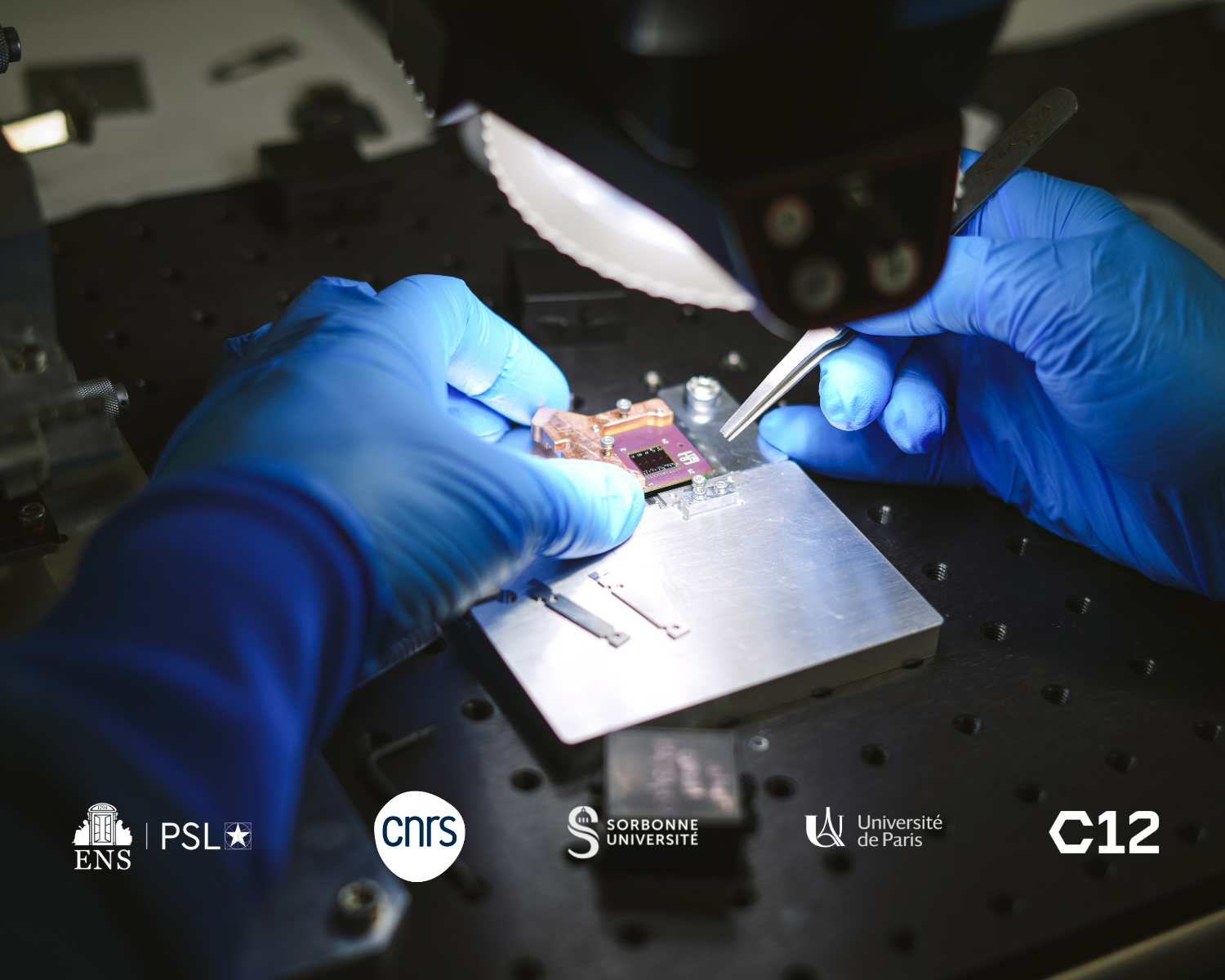
Miracle_Q
MIcrowave Resonators And Carbon nanotubes for aLternativE Qubit technology
Project manager
Matthieu Delbecq, Sorbonne Université
Overview
MIRACLE_Q aims to manufacture, validate and test the elementary module of a new quantum computer platform.
Keywords: material, carbon nanotube, solid-state qubit, microwave resonator, cavity quantum electrodynamics, error reduction for quantum computing, high fidelity quantum gate, scalable quantum computing platform
In a nutshell
MIRACLE_Q develops an alternative path to all existing semiconductor quantum architectures, potentially overcoming the technological complexities of other quantum computing hardware. The consortium’s approach is to tackle computational errors at their root, i.e. in the material, by introducing a spin qubit hosted in carbon nanotubes. MIRACLE_Q’s unique approach is to combine the long coherence times expected of these qubits with a silicon platform compatible with industrial production lines.
Scale-up is guaranteed by the use of high-quality resonators, acting as quantum communication buses enabling coherent coupling of semiconductor qubits. The aim is to build a complete quantum device and demonstrate a high-fidelity logic gate between two spin qubits housed in carbon nanotubes and connected via a microwave resonator. The realization of this gate is necessary to give future quantum processors their full computing power.
To achieve this, the consortium, comprising 4 internationally renowned research groups and one industrial partner, brings together a wide range of skills in different fields: spin physics, cavity quantum electrodynamics physics, microwave integration, magnetism, nano-fabrication… The project draws from very promising preliminary work carried out by the partners, some of whom already have a long history of collaboration with each other.
Challenges
- Develop a new quantum platform combining spin qubits in ultra-clean carbon nanotubes with superconducting microwave resonators. This innovative technological choice raises major challenges linked to obtaining very high coherence times for the qubits, precise integration of the nanotubes in the superconducting circuits, and achieving strong spin-photon coupling thanks to fine control of the local magnetic field produced by dedicated nanomagnets.
- Develop high-impedance resonators capable of preserving qubit qualities while ensuring efficient coupling between several qubits.
- Scaling up requires a rigorous strategy of 3D integration and advanced microwave design. This involves mastering complex manufacturing processes (flip-chip) and electromagnetic simulation at different scales, from nanometer to centimeter, to guarantee the device’s future industrial compatibility.
Tasks
- WP1: Spin qubits coupled to microwave resonators
- WP2: Control of Magnetic Field Gradient on a single carbon nanotube
- WP3: High impedance resonators and flip chip architecture
- WP4: Design, modeling an optimization of microwave cavities
Consortium
- C12
- Institut Jean Lamour (IJL, CNRS / Université de Lorraine)
- Laboratoire de physique de l’ENS (LPENS, CNRS / ENS-PSL / Sorbonne Université / Université Paris Cité)
- Université de Lorraine
- XLIM (CNRS / Université de Limoges)